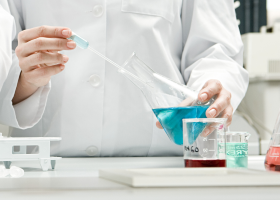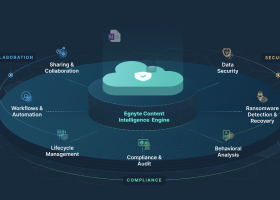Pharmacovigilance
What Is Pharmacovigilance?
Pharmacovigilance, also known as PV, is the practice of monitoring the effects of medical drugs before and after they have been licensed for use. It encompasses the science and activities relating to detecting, assessing, understanding, and preventing adverse effects or other drug-related problems. Fundamentally, pharmacovigilance is concerned with safety and efficacy (i.e., is it safe, and does it work?).

The primary objectives of pharmacovigilance are to:
- Identify and evaluate previously unreported adverse reactions
- Facilitate risk-benefit assessments
- Disseminate information to healthcare professionals and patients
| Adverse Drug Event (ADE) Any negative or unwanted reaction within a patient’s body caused by medication can be an adverse drug event, also known as a side effect. A serious adverse event (SAE) is a life-threatening side effect. Adverse drug event reporting is mandatory to meet regulatory pharmacovigilance requirements. |
While pharmacovigilance is a pharmacological science, it requires a combination of science and creative skills. Pharmacovigilance draws upon diverse disciplines and skills, including medicine, writing, investigative work, and analysis.
Pharmacovigilance is a bit like detective work. Its role is to help determine if any adverse effects from a patient’s use of a drug or medical device were caused by those items instead of other factors.
There are four main stakeholder categories in pharmacovigilance:
- 1. Patients
- 2. Doctors or pharmacists
- 3. Marketing authorization holders (companies)
- 4. Regulators, such as government authorities and internal review committees
As part of pharmacovigilance, any information related to adverse effects to a drug is collected, analyzed, and used to create reports that detail any potential risks with the drug. These reports must be sent to regulatory agencies.
Sources of information used in pharmacovigilance include:
- Reports of adverse reactions in study subjects
- Healthcare and population statistics
- Information on the consumption of other medicinal products
- Other clinical trials and epidemiological studies
- Published medical literature
Why Pharmacovigilance is Important
Pharmacovigilance is an essential function throughout the lifecycle of medication—from preclinical development to post-market surveillance. Pharmacovigilance is important because it:
- Directs the continuous monitoring of drugs to identify any unexpected effects
- Collects and reports new data to health authorities on a regular basis
- Keeps consumers safe from the adverse effects of a drug
- Detects unknown adverse effects related to drug interaction
- Triggers the distribution of information about the adverse effect of drugs and drug interactions
- Mitigates risks and enable therapeutic modifications
- Supports the identification of mechanisms that cause adverse effects of drugs
Pharmacovigilance in Clinical Research
During clinical research, pharmacovigilance programs focus on ongoing monitoring of drugs to ensure they remain safe for use and to detect adverse drug events, which can occur at any time. An important role of pharmacovigilance in clinical research is to:
- Determine whether the drug in question caused or was related to a serious adverse event (SAE)
- Discover whether the benefits exceed the risks
- Protect high-risk study subjects
- Provide data on the risks and advantages of the medication
- Update regulators, public, and the medical community about the potential risks of drugs
Regulatory Agencies and Pharmacovigilance
Pharmaceuticals are overseen worldwide by regulatory agencies and pharmacovigilance. Nearly every country has a regulatory authority that provides the guidelines and enforces the rules related to pharmaceutical products’ development, testing, licensing and registration, manufacturing, marketing, labeling, and pharmacovigilance.
Regulatory agencies established in respective countries include:
- Brazilian Health Regulatory Agency (Anvisa), Brazil
- Central Drugs Standard Control Organisation (CDSCO), India
- European Medicines Agency (EMA), European Union (EU)
- Food and Drug Administration (FDA), United States
- Health Canada, CANADA
- Medicines and Healthcare products Regulatory Agency (MHRA), United Kingdom (UK)
- Medicines Control Authority of Zimbabwe (MCAZ), Zimbabwe
- Medicines Control Council (MCC), South Africa
- Ministry of Food and Drug Safety (MFDS), Korea
- Ministry of Health (MoH), Sri Lanka
- Ministry of Health, Labour and Welfare (MHLW), Japan
- National Agency for Food and Drug Administration and Control (NAFDAC), Nigeria
- New Zealand Medicines and Medical Devices Safety Authority (MEDSAFE), New Zealand
- State Food and Drug Administration (SFDA), China
- Swissmedic, Switzerland
- Therapeutic Goods Administration (TGA), Australia
Global regulatory organizations include:
- International Conference on Harmonization (ICH)
- Pan American Health Organization (PAHO)
- World Health Organization (WHO)
- World Intellectual Property Organization (WIPO)
- World Trade Organization (WTO)
Examples of Regulatory Agencies and Pharmacovigilance
In the EU
The EMA established the role of Qualified Person for Pharmacovigilance (QPPV), an individual responsible by law for the safety of a human pharmaceutical product within the EU. Every pharmaceutical manufacturer is required to have a QPPV.
In addition, many European and other countries also require a Local Person for Pharmacovigilance (LPPV) at a country level who may report to the EU QPPV. They are responsible for establishing and maintaining a pharmacovigilance system locally. Responsibilities include:
- Acting as a single point of contact for authorities (e.g., audits, inspections)
- Ensuring submission of all pharmacovigilance-related documents per the legal requirements
- Managing and keeping a Pharmacovigilance System Master File (PSMF) up to date
- Overseeing the safety profiles of marketed products and any emerging safety concerns
- Responding promptly to any request from authorities
In the United States
The FDA manages pharmacovigilance through two groups. The Center for Drug Evaluation and Research (CDER) is responsible for approving and regulating biological products for human use. The Center for Devices and Radiological Health (CDRH) focuses on medical devices for human use.
Unlike the EU, there is no requirement for or equivalent of a QPPV or PSMF in the US. However, any organization that holds an FDA license for a drug must demonstrate that they have effective pharmacovigilance systems in place, including:
- Meeting Individual Case Safety Reports (ICSRs) and Periodic Adverse Experience Report (PADER) reporting requirements
- Ensuring that adequate written pharmacovigilance procedures are in place
- Demonstrating that the following pharmacovigilance activities are being performed with regards to ADE data:
- Implementing and maintaining a Risk Evaluation and Mitigation Strategy (REMS), which can include providing:
- Educational materials (e.g., medication guides)
- Messages to inform health care providers and patients of any risk
- Additional monitoring requirements while the drug is being administered
Pharmacovigilance: Making Pharmaceuticals Safer
Although pharmaceuticals undergo extensive research in animals and testing on humans during clinical trials, there may still be adverse events once the products are released. Pharmacovigilance provides a structure for the ongoing monitoring of the safety and efficacy of drugs.
The role of pharmacovigilance continues to grow and change with an increased focus on communication. With pharmacovigilance, consumers and manufacturers can rest assured that regulatory authorities worldwide have a keen eye on all drugs on the market.
Egnyte has experts ready to answer your questions. For more than a decade, Egnyte has helped more than 16,000 customers with millions of customers worldwide.
Last Updated: 22nd December, 2021



